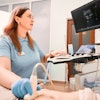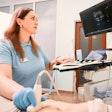Dear AuntMinnie Member,
Underground coal miners in the U.S. are required to receive periodic chest x-ray exams for the surveillance of coal workers' pneumoconiosis (black lung). Unfortunately, the Coal Workers' Health Surveillance Program currently only provides for traditional film-based radiography.
But a new proposed rule from the U.S. Department of Health and Human Services (HHS) may finally bring this program into the digital era, allowing the exams to be performed on either digital x-ray or film-screen systems. The new rules would include support for both digital radiography and computed radiography technology.
The change is much needed as many imaging facilities that had been participating in the National Institute for Occupational Safety and Health (NIOSH) program have converted to digital systems in recent years. The new rule would open the door for their return to the program, according to a spokesperson for the NIOSH.
International editor Eric Barnes has our coverage of the rule, which you can read about here, or by visiting our Digital X-Ray Community at xray.auntminnie.com.
Evaluating melanoma therapy response
Researchers from Dana-Farber Cancer Institute have found promising results using dynamic contrast-enhanced CT and FDG-PET/CT for assessing therapeutic response in patients with unresectable stage III or IV melanoma.
In a phase I clinical trial using bevacizumab and ipilimumab to treat these patients, they found that those with FDG-PET/CT images showing partial metabolic response achieved longer disease-free survival than those with stable metabolic disease or progressive metabolic disease.
While the results are preliminary and more studies are needed, the researchers believe that both dynamic contrast-enhanced CT and FDG-PET could provide an early means of determining treatment efficacy.
Features editor Wayne Forrest covered the research, which you can access here, or in our Molecular Imaging Digital Community at molecular.auntminnie.com.
















